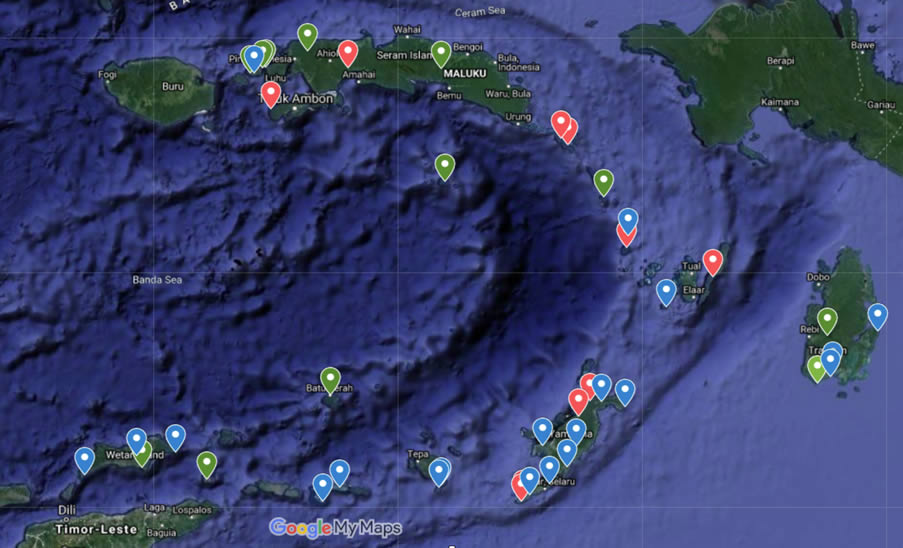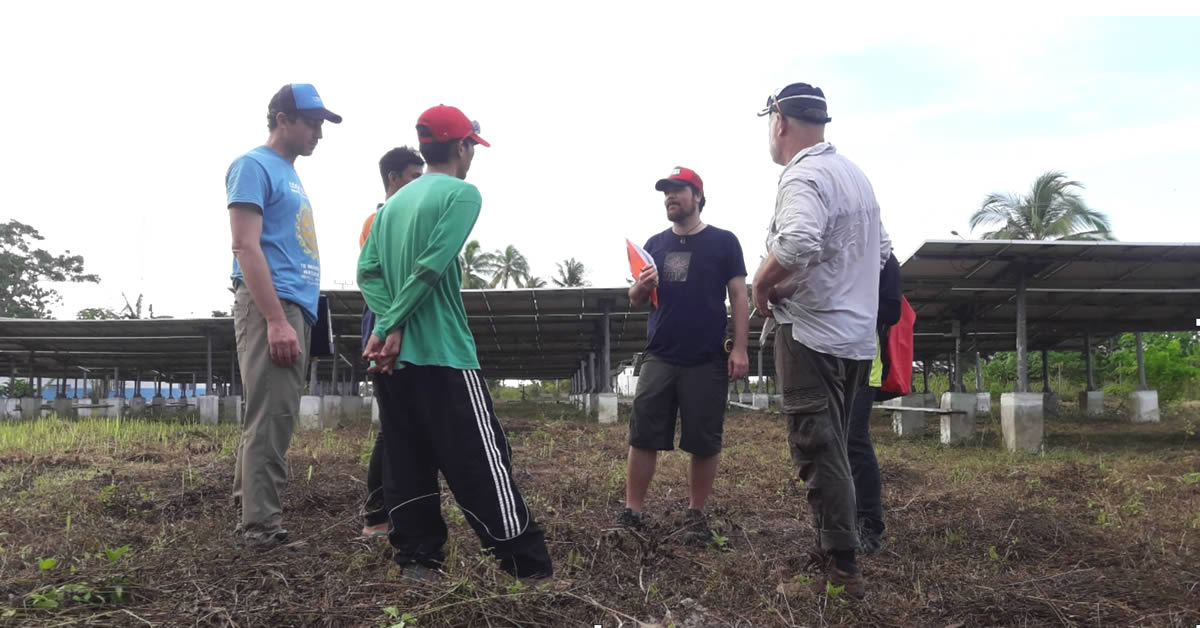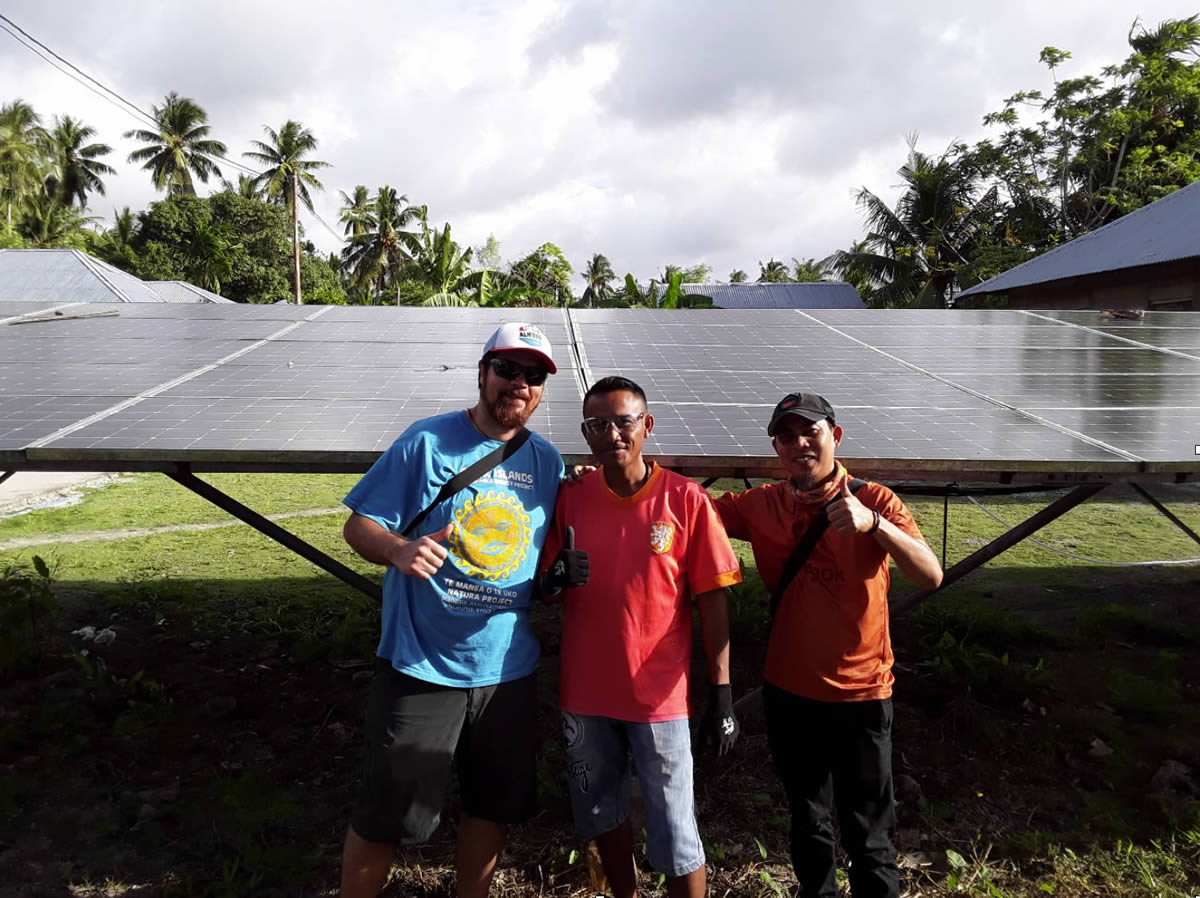Car. Plane. Boat. Hike. For Mauricio Solano-Peralta, a renewable energy engineer from Infratec Ltd., sometimes reaching the project site can prove more of a challenge than designing a renewable-based energy system. Mauricio and the New Zealand-Maluku Access to Renewable Energy Support (NZMATES) team is currently working to establish clean, sustainable power throughout Maluku Province in Indonesia, often traveling for days on end to bring renewable energy to remote island communities.

Maluku, Indonesia’s eastern province, is comprised of 1,422 islands and about 1,200 villages. Fishing and agricultural production form the basis of the province’s economy, including a considerable portion of the world’s nutmeg. However, access to markets and energy is a challenge for almost all of Maluku’s 1.7 million inhabitants. This presents a great opportunity for microgrid deployment as well as an operational challenge to sustain system operations in extremely remote locations.
The team’s focus this month is Pulau Tiga, a community of 60 households and a small hotel that currently relies on a diesel generator that operates 12 hours a day. At one time, the diesel system was supported by a solar mini-grid, but when the lead-acid batteries failed—a result of sitting at low charge over time—it fell into disrepair.
Mauricio and his colleagues identified this project as an ideal starting point, since the grid infrastructure was already in place, in serviceable condition, and the site was in “close proximity” to the main offices of the electrical utility—only a 2-hour drive and a 30-minute boat ride. Mauricio marvels at the distance and explains that it is, in fact, the organization’s closest project site.
“We recognized that it was a great opportunity to set up a project that was relatively nearby, and at which we could establish operational maintenance protocols with the utility. We hope to establish protocols with this project to make sure that proper maintenance is being provided and get local capabilities on board for long-term maintenance.”

Mauricio has been using HOMER software for modeling renewable-based energy systems for more than 12 years since he completed a master’s degree in sustainability in the Netherlands. “I love how straightforward HOMER is for setting up and the continuous improvements to modeling options like the new components library. It’s amazing. Over the years I’ve also tried other modeling software, which I like, but does not have such a friendly interface and inputting data is a bit more complex. Also, HOMER has a more updated database of components and it’s easier to add them.”
Day to day, the team uses HOMER for carrying out the initial technical and economic assessments of potential projects. “In our program, we have over 40 sites we are trying to support. For these sites, HOMER helps us with filtering the most promising locations. We also use it to assess specific options with our partners,” he says.

Mauricio explains that once his team completes the initial assessments, they play with HOMER to modify variables and simulate various generation mixes. Then they select five different system designs from the simulation models to discuss with partners: typically a model that includes 12 hours of diesel-generated power, another with 24-hours of diesel-generated power, one PV system without a battery, and three PV systems with varying levels of renewable energy generation and energy storage.

His company’s design and business development teams also use HOMER quite frequently. “For business development work, it forms part of a lot of tenders that request HOMER modeling as part of the technical proposal. For the design team, it is generally used in the pre-design stage and to confirm that the selected configuration will attain the desired outcomes for specific projects.”
As a part of the NZMATES Programme, a top priority has been investing time training utility staff members to use HOMER at the local level. “We find that filling in a HOMER model helps a lot with understanding the whole lifecycle of a project,” he says. They have also been working extensively with Pattimura University to develop a solar lab, educational curriculum, and troubleshooting exercises and training resources in an effort to inform the next generation of renewable energy experts, spark community involvement, and create job opportunities.

In fact, according to Mauricio, the most fulfilling aspect of his work is experiencing the effect that electrification has on rural communities.
“It’s very rewarding once an installation comes together. For one thing, it has a massive impact on the social wellbeing of the community around lowering the cost of power and providing energy access. In many cases, renewable-based mini-grids provide the necessary electricity to power clinics, schools, cultural and social events. They have a positive impact on local livelihoods, from helping small-scale fishermen refrigerate their catch to providing jobs and improving the economic health of the entire community. These are all considerations that NZMATES seeks to include in assessments.”
As Mauricio and his team continue to make their way across the archipelago by car, plane, boat, and on foot, to provide clean, sustainable power to remote island communities, HOMER Energy would like to thank them for the work they are doing, and for bringing us along as their preferred microgrid modeling and optimization tool. It’s an illuminating journey.
Mauricio’s team, and local partner Mercy Corps Indonesia, are currently involved in over 40 sites through the New Zealand – Maluku Access To Renewable Energy Support (NZMATES) Programme, in partnership with the Indonesian electrical utility Perusahaan Listrik Negara (PLN), the Directorate General for Renewable of New Renewable Energy and Energy Conservation (EBTKE), the Ministry of Energy and Mineral Resources (ESDM), with the New Zealand Ministry of Foreign Affairs and Trade (NZ MFAT) as program donor. Mauricio and his colleagues also work alongside a dedicated local network of technical and social specialists as well as other support staff, based out of Mercy Corps Indonesia’s field office in Ambon, Maluku.
HOMER software delivers industry-leading system simulations, optimization, sensitivity analysis and best-in-class storage models across three categories of hybrid systems: islanded microgrids, grid-connected distributed generation, and front-of-the-meter utility-scale storage and hybrid systems.
Learn More
Visit UL Solutions HOMER® software to learn more about HOMER Pro, HOMER Grid and HOMER Front modeling and optimization software, download complimentary trials, sign up for training and explore our extensive knowledge base and other support documents.

